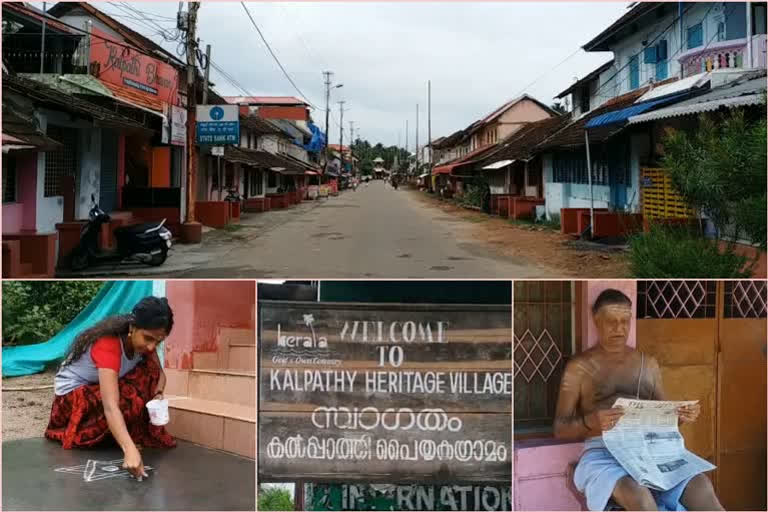Palakkad: Located on the banks of the river Nila, Kalpathy is an early settlement of Tamil Brahmin community in the southern state of Kerala and it plays a huge role in building the cultural fabric of the state.
This Tamil migrant brahmin village is more popular as the hub of Carnatic music in Kerala rather than for the legacy and tradition passed down through the generations for the past 600 years.
The beauty of the architecture here - each brahmin quarter sharing walls and adjoined with the next one forming a linear pattern, the streets that wake up to the Venkatesha Suprabhatham, Vedic mantra recitals and Shiva Sthothram (hymns) - all musical, the rice flour kolam (artful drawing deemed religious and ritualistic) in the front courtyard of each quarter, the customary reading of The Hindu daily, Idli, Sambar and ghee rich sweets and savouries announcing the glory of Tamil food culture, and the magnificent Ratholsavam (Chariot Festival) at the Kalpathi Temple celebrated with fervour; All of these constitute the stamp of life in Kalpathi.
The rolling of heavily decorated majestic temple chariots through the village streets of Kalpathy is the major attraction of the car festival, known as 'rathotsavam' in local parlance.
Sree Viswanathaswamy temple is the main centre of the festival while the three satellite temples in the village of new Kalpathy, old Kalpathy and Chathapuram also take part in it.
These were all passed on through the generations of lives in the Agraharam without losing the original charm.
Read: Locals spot wild bear in the inhabited area in Kerala; Villagers panic-stricken
It is said that the river got its name Kalpathi as it flows between the granite stone (Kallu) channels (Pathi) along the banks. Later, the settlements and land along the Kalpathi river and the temple here came to be known as Kalpathy.
The history of Kalpathy, which remains to be a mark of the river bank civilisations, began in the 14th century. A group of brahmins from Mayavaram, near Thanjavur in Tamil Nadu, migrated to Palakkad in Kerala.
There are two versions on the reason for the migration of this brahmin community to Palakkad. One version suggests that then ruler of Palakkad, Kombi Achan, brought the community and made them settle here in Palakkad for carrying out poojas in his Temple.
Another version indicates that the community or a cluster of Brahmin families had then fled from Thanjavur and sought refuge here following the commotion and chaos after the death of Pandya king Maravarma Kulashekara Pandya in Thanjavur.
Either way, Kalpathy holds an important place in the modern-day history much beyond that of a mere Tamil migrant brahmin settlement. The contributions made to the cultural arena by those in Kalpathy adds to the place’s relevance.
There have been stars in the fields of literature, music, bureaucracy, judiciary and scientific research hailing from this settlement in Kalpathy.
The streets of Kalpathy nurtured the stalwarts in vocal and instrumental music like C S Krishnaiyer, M D Ramanathan, Mridangam Mani Iyer, K V Narayana Swami, Parameshwara Rama Bhagavathar, Mundaya Rama Bhagavathar, Desamangalam Ramanarayana Iyer, G K Sivaraman.
The litterateurs including Malayattoor Ramakrishnan and T K Sankaranarayanan also have their roots in Kalpathy. The list may go endless with the many more lamps, celebrated and remembered, for lighting our cultural pathways.



